2022| 2021 | 2020 | 2019 | 2018| 2017 | 2016 | 2015 | 2014 | 2013
Highlights for 2022
Ornate Box Turtle Program
We had another productive year of managing and restoring habitat for rare species in 2022. We worked at the site on 70 days, accumulating 413 volunteer hours. Our volunteer mileage in 2022 was 5,588 miles. Our mileage is used as matching dollars to help support the WDNR’s – Bureau of Natural Heritage Conservation program.
One of the areas where we worked in 2022 was dominated by noxious exotic plants including Honeysuckle (Lonicera spp.) (see photo below) and Buckthorn (Rhamnus spp.). Both of these species can overwhelm and easily out-compete native vegetation.
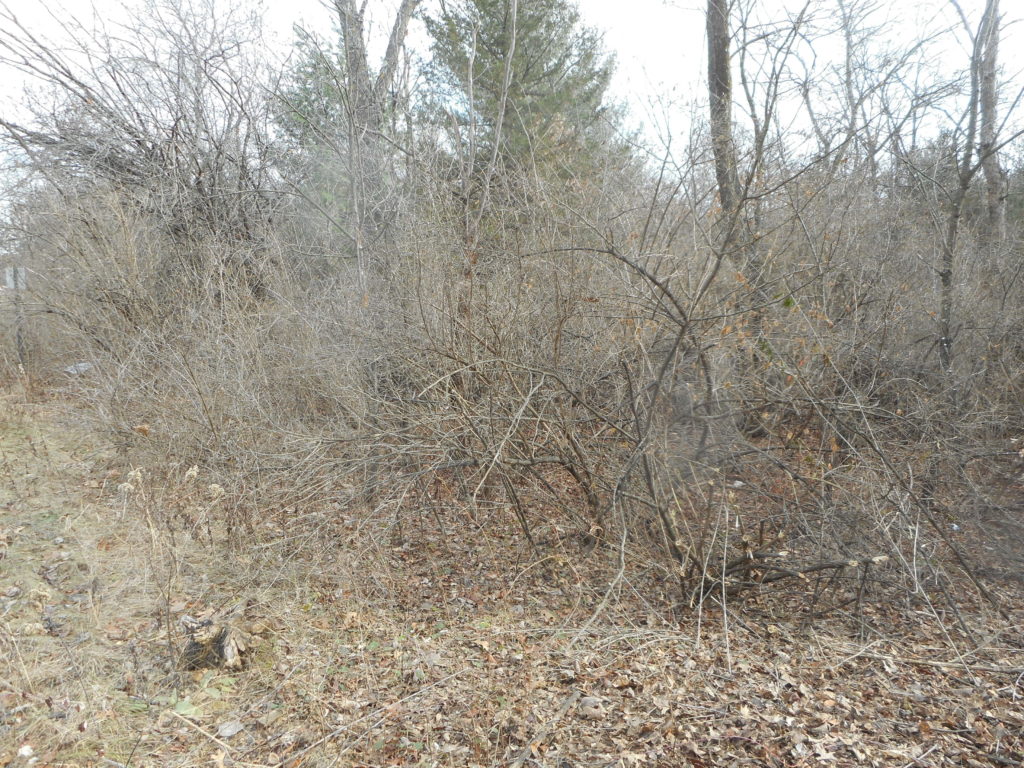
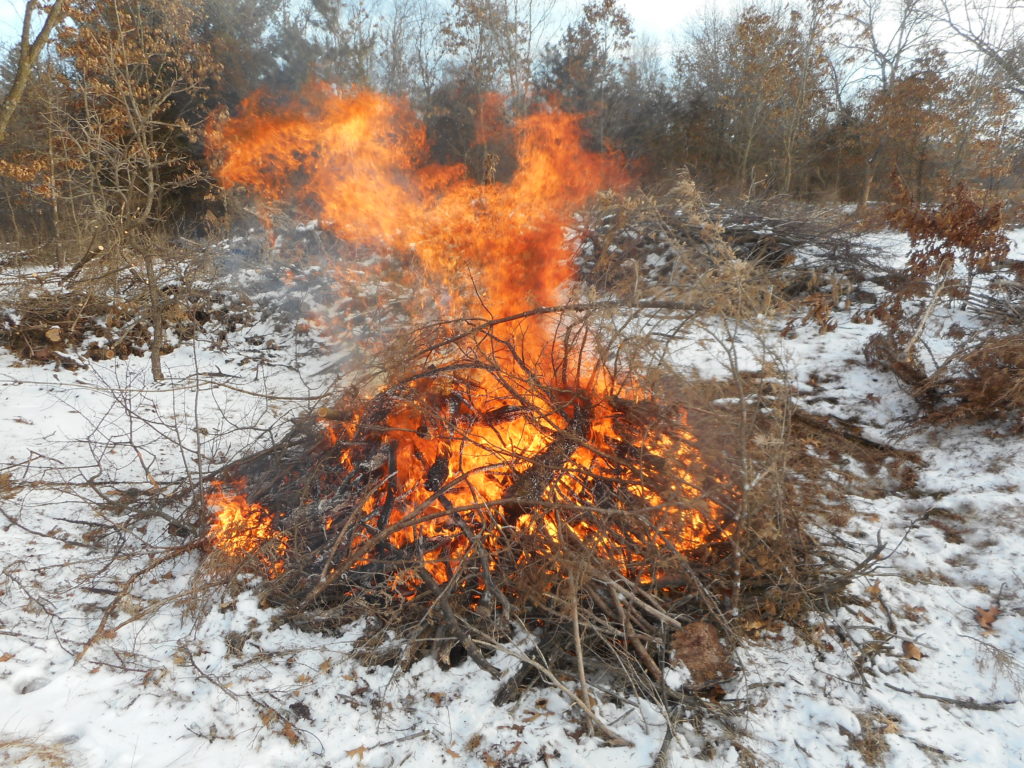
We cut Black Oaks, Cherry trees, White Pines, Red Cedar and exotic brush to restore the area to a Sand Barrens from early January through mid-March, and from October through December of 2022. This part of the State Natural Area had not received major habitat management for decades.
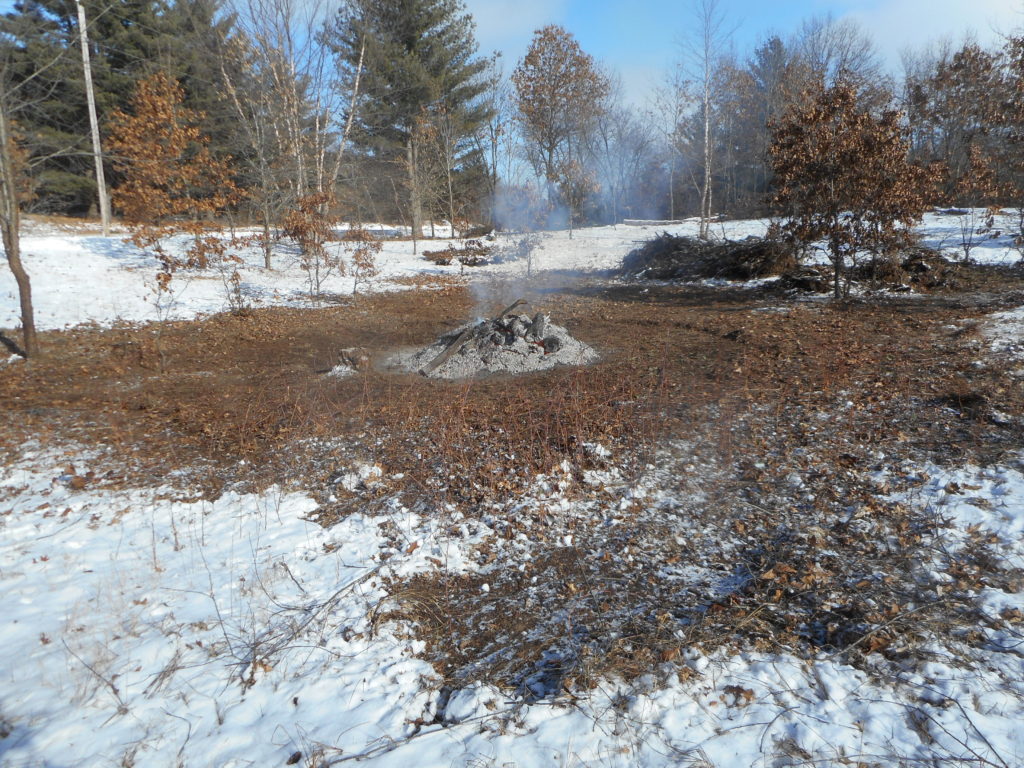
Sand barrens are herbaceous upland communities that develop on unstable or semi-stabilized alluvial sands along major rivers like the Mississippi and Wisconsin. They are partly or perhaps wholly anthropogenic in origin, occurring on sites historically disturbed by plowing or very heavy grazing. Unvegetated “blow-outs” are characteristic features (WI DNR).
We also continued to remove exotic plants throughout the growing season (late April through early October of 2022), and on adjacent properties where we received landowner permission to control these species. We have seen a significant decline of Spotted Knapweed (Centaurea maculosa) over the years but are still battling Japanese Hedge Parsley (Torilis japonica) and Garlic Mustard (Alliaria petiolata).
We have also been working for the past four years to set back three Sumac (Rhus spp.) clones, but two other very aggressive Sumac clones guarantee that our efforts are far from over. We plan to take a different approach to managing these two clones in 2023.
Wood Turtle Program
In May of 2022 we conducted major work to restore a nesting site that has been damaged at least six times by serious flooding over a period of years, starting in 2016. This is likely the last chance we will have to save the site. Photo 1 shows the damage the site experienced as water levels washed over the retaining wall that we had installed in 2019, and large amounts of gravel were deposited on top of the electric fence on the south end of the site.
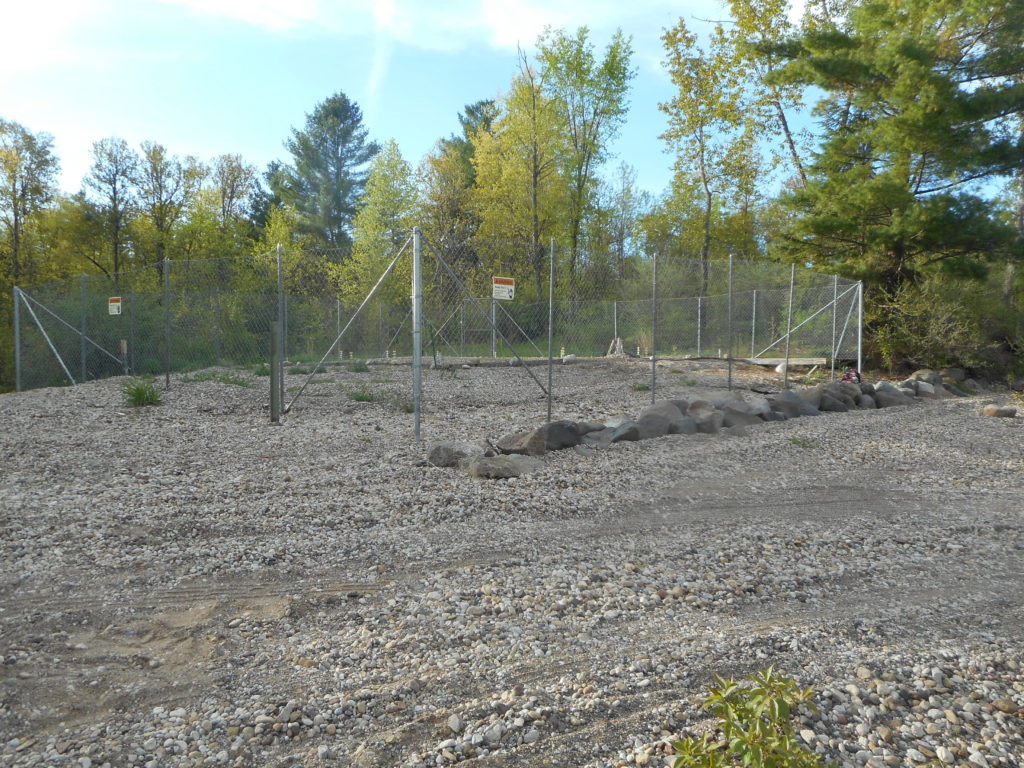
We shrunk the nest site and built a much higher retaining wall that is higher than the surface of the nest site. Nesting success in 2022 was simliar to that of previous years.
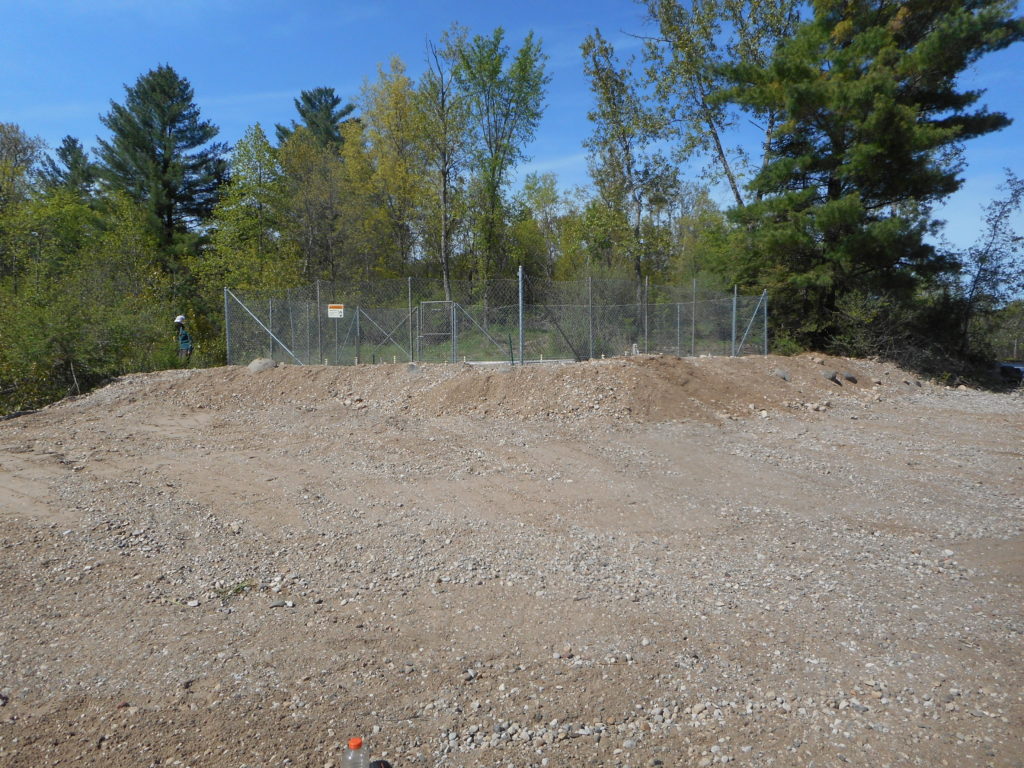
We did not install any new Wood Turtle nesting sites in 2022 as we wanted to assess our ability to effectively manage our existing 30 sites, 29 in northern Wisconsin and one in Michigan. We have been shrinking some of our larger nest sites and have not seen a decline in nesting females at those sites. If we find locations to install new nesting sites in 2023 and beyond, we are likely to make the sites smaller to reduce weed maintenance.
Nest sites were managed for weeds prior to nesting season, and then again in July and August following the nesting season, and for a last time when sites were shut down for the season in September.
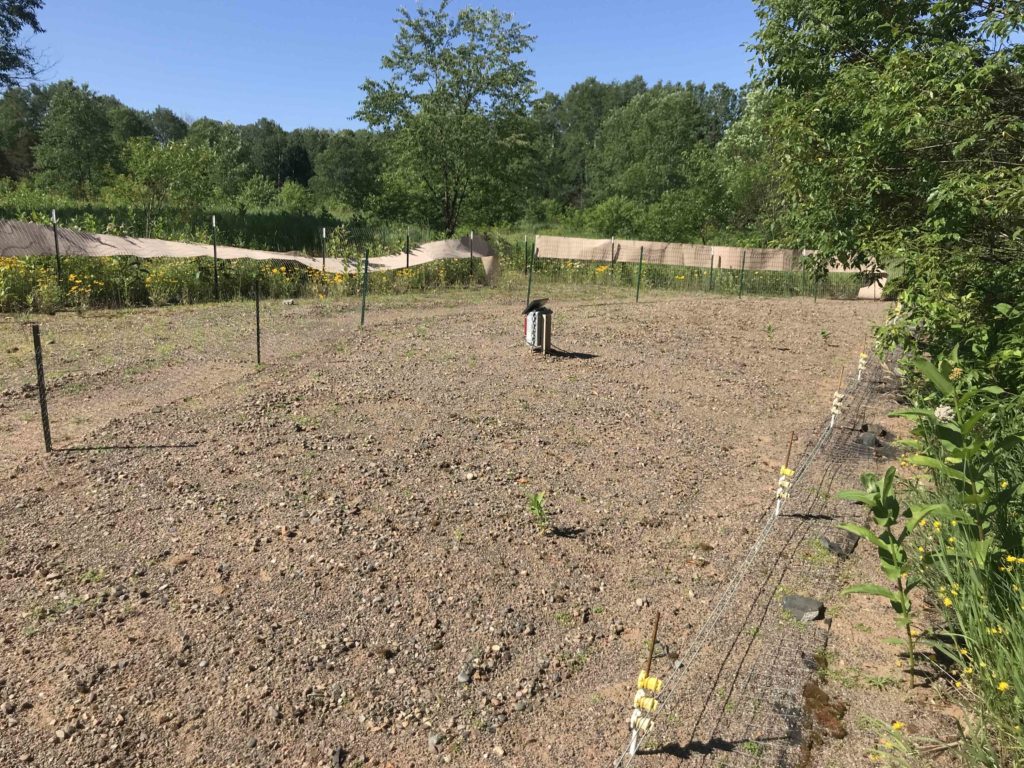
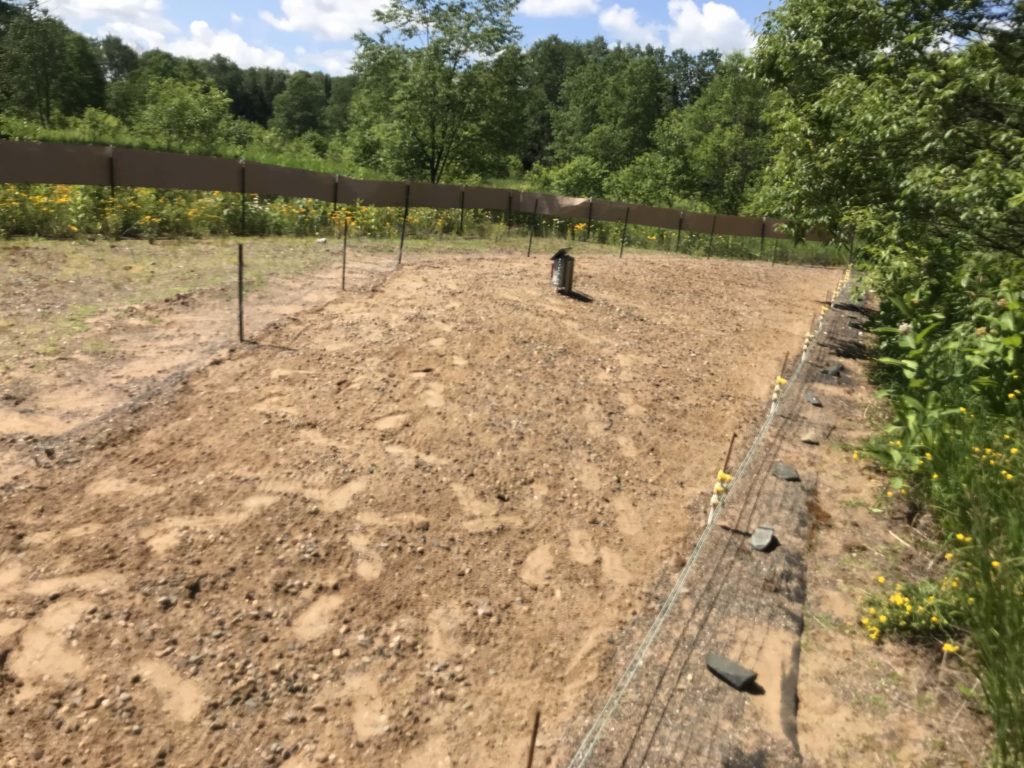
We had nesting success at a minimum of 18 of our 30 sites in 2022, totally 619 hatchlings. This exceeded our previous high of 503 in 2020! This was sweet news, especially after having significantly fewer hatchlings (332) in 2021.
2022| 2021 | 2020 | 2019 | 2018| 2017 | 2016 | 2015 | 2014 | 2013